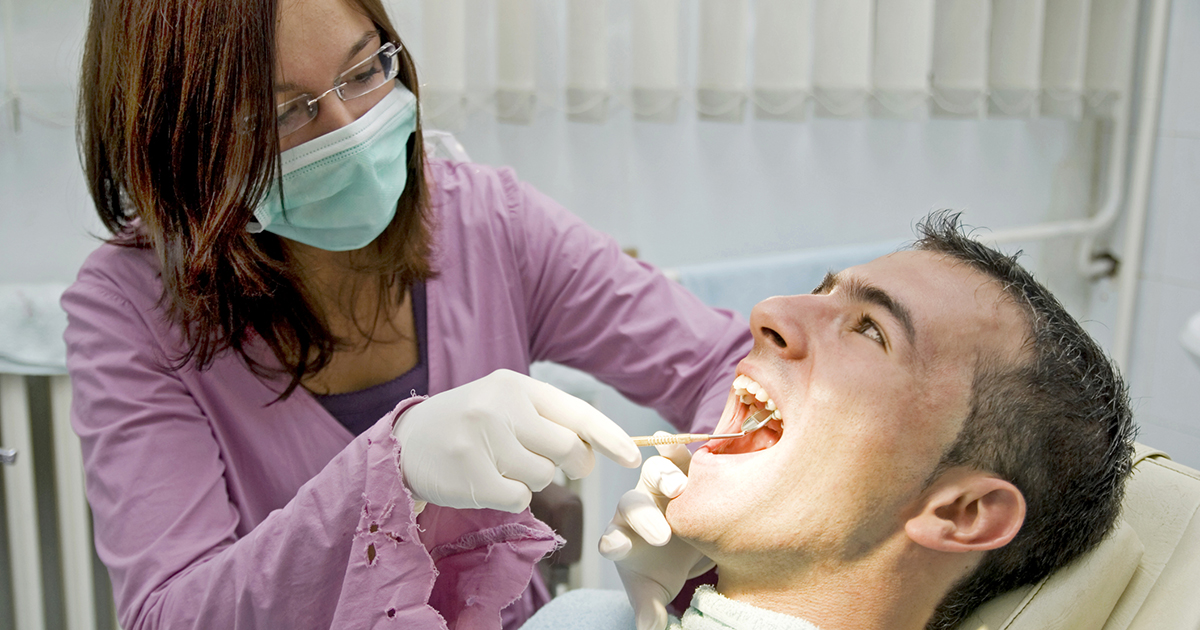How To Treat A Salivary Gland Stone
Saliva may seem like an annoying biological process that winds up on the pillow when you sleep rather than doing anything useful, but it actually serves an important process. When individuals eat, certain glands in the mouth known as salivary glands secrete saliva. This liquid helps the mouth to break down the food and swallow it. Without saliva, individuals would have a much more difficult time swallowing and digesting. There are salivary glands that exist on the floor of the mouth and close to the inside of the eye. Sometimes, it is possible for these glands to form a stone, typically made of calcium, that can cause pain if not removed. While it sometimes comes out on its own, other times, it needs a little help. Learn about treatment options now.
Stimulate Flow Of Saliva Naturally

While it isn't always possible to determine the cause of why the salivary gland stone formed in the first place, sometimes it can be attributed to conditions that dry the mouth out. Dehydration can sometimes lead to the formation of stones and as can certain medications with dry mouth as a side effect. One method to remove the salivary gland stone is to stimulate the flow of saliva naturally. This can be easily done by drinking a lot of water to help get the mouth back to an acceptable moisture level. Individuals can also get their saliva glands working by sucking on a lemon or a sour candy. This is typical because of the acidic level the tart or sour item possesses. This pressure will make the stone pass from the gland naturally.
Continue for more information on treating salivary gland stones now.
Massage By A Doctor Or Dentist

A massage by a doctor or dentist may be another treatment option for salivary gland stones. If the stone happens to be quite small, a careful massage by either a doctor or dentist can gently ease the stone from the gland until it is forced out of it. While doctors and dentists prefer to only use this method if the salivary gland stone is small, they can make a slight incision in the gland to help it pass more easily during the massage if the stone is a little too large. This is why if individuals start to notice a stone below their tongue or in their cheek, they should schedule an appointment to see either a doctor or dentist as soon as possible. The longer individuals leave the stone there, the larger it will become if it does not pass naturally.
Get the details on more options for treating a salivary gland stone now.
Sialendoscopy

One new method more dentists have been starting to use to treat salivary gland stones is sialendoscopy. This treatment uses microscopic lighted scopes inserted into the salivary gland. These scopes allow the dentist to locate the stone. Once they've found it, they then use equally tiny microscopic instruments to physically remove the stone from the salivary gland. This treatment uses light or local general anesthesia, so patients don't feel any discomfort during the procedure. Patients are also able to leave the same day. This procedure is an excellent option for individuals whose salivary gland stones are too large to pass naturally or be massaged out of the gland. Since salivary gland stones can become quite painful, especially when individuals are trying to eat, this treatment could be the best option for providing relief. Although the microscope is usually small enough to pass through the duct unobstructed, in some cases, the duct opening may be too tiny. In this instance, a small incision may be made to allow the scope to pass through.
Learn more details on how to treat a salivary gland stone now.
Surgical Removal Of The Gland

If salivary gland stones keep recurring, one of the treatments doctors will consider is the surgical removal of one of the salivary glands. This prevents the recurrence of the stones since it removes the most common location for them to form. One of the salivary glands often considered for removal is the gland around the inner ear, which is known as the parotid gland. General anesthesia is used to put patients into a comfortable sleep. A cut is then made at the front of the ear and extended either down the neck or around the back of the ear. The gland is then removed and a tube is put into place to help drain blood that collects in the area. The tube will be removed the next day. Patients are also given stitches, which will have to be removed a week later.
Another salivary gland that can be removed is the sublingual gland. Patients are once again given general anesthesia and an incision is made beneath the tongue and near the inside of the lower teeth. The gland is removed and patients are given dissolvable stitches. The last salivary gland that can be removed is the submandibular gland. This procedure is similar to the others except the neck receives an incision.
Discover additional ways to treat a salivary gland stone.
Antibiotics For Infection

Sometimes, the salivary gland can become infected when it has a stone lodged within it. This is because the stone is keeping saliva from flowing out into the rest of the mouth. If individuals happened to pick up some germs recently, that bacteria or virus might be inside their saliva. Since it is unable to go anywhere but the gland, it then causes an infection. This can make the pain even worse and may threaten other parts of the mouth if the infection spreads. A solution for this is to receive antibiotics. Patients will have to see a doctor to determine which antibiotic will work best for them. It's also prudent to have the stone removed at the same time, however, so patients can limit the chance of another infection.